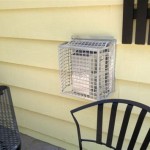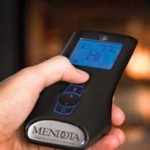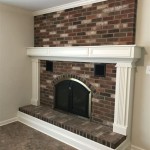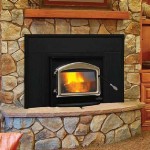Outdoor Propane Gas Fireplaces: A Comprehensive Guide
Outdoor propane gas fireplaces have become increasingly popular additions to residential and commercial outdoor spaces, offering a convenient and aesthetically pleasing alternative to traditional wood-burning fire pits and fireplaces. These appliances provide instant warmth, ambiance, and a focal point for social gatherings, extending the usability of patios, decks, and gardens well into cooler months. Understanding the various aspects of outdoor propane gas fireplaces, including their types, features, installation considerations, safety guidelines, and maintenance requirements, is crucial for informed decision-making and ensuring a safe and enjoyable outdoor living experience.
Types of Outdoor Propane Gas Fireplaces
Outdoor propane gas fireplaces are available in a range of styles and configurations to suit diverse aesthetic preferences and spatial constraints. The primary types include:
Fire Pits: Propane-fueled fire pits are typically freestanding units, often round or square, designed to be placed directly on a patio or deck surface. They are generally more portable and affordable than other types of gas fireplaces. Fire pits come in a variety of materials, such as steel, aluminum, and concrete, and may feature decorative elements like lava rocks, fire glass, or ceramic logs.
Fire Tables: Fire tables combine the functionality of a coffee table with the ambiance of a fireplace. These units feature a surface area around the fire bowl, providing space for drinks, snacks, or decorative items. Fire tables are typically constructed from materials like aluminum, steel, or synthetic wood, and they often include features like adjustable flame height and hidden propane tank storage.
Fire Bowls: Similar to fire pits, fire bowls are typically smaller and more decorative, often featuring unique shapes and designs. They are ideal for adding a touch of elegance and warmth to smaller outdoor spaces. Fire bowls may be made from materials like copper, ceramic, or cast iron, and they can be positioned on pedestals or directly on the ground.
Fireplace Inserts: These are designed to be installed into an existing masonry fireplace or a custom-built enclosure. They offer the convenience of propane gas without the need for extensive construction. Fireplace inserts are available in various sizes and styles, and they typically feature realistic-looking ceramic logs and adjustable flame settings.
Linear Fireplaces: Linear fireplaces feature a long, rectangular burner and a sleek, modern design. They are often built into walls or custom enclosures, creating a dramatic focal point in outdoor living spaces. Linear fireplaces may feature glass surrounds, decorative rocks, or other embellishments.
Key Features and Considerations
When selecting an outdoor propane gas fireplace, several key features and considerations should be taken into account to ensure optimal performance, safety, and aesthetic appeal:
BTU Output: British Thermal Units (BTUs) measure the heat output of a propane gas fireplace. A higher BTU rating indicates a greater heating capacity. The appropriate BTU rating will depend on the size of the outdoor space and the desired level of warmth. Smaller fire pits typically range from 30,000 to 50,000 BTUs, while larger fireplaces can reach upwards of 100,000 BTUs or more.
Ignition System: Outdoor propane gas fireplaces utilize various ignition systems, including:
- Match-Lit Ignition: Requires manually lighting the burner with a match or lighter. This is the simplest and most affordable type of ignition system.
- Push-Button Ignition: Utilizes a battery-powered spark igniter activated by a push button.
- Electronic Ignition: Offers the most convenient and reliable ignition. It usually involves a remote control or wall switch to ignite the burner.
Safety Features: Safety is paramount when using outdoor propane gas fireplaces. Key safety features to look for include:
- Flame Failure Device (FFD): Automatically shuts off the gas supply if the flame is extinguished, preventing gas leaks and potential explosions.
- Tip-Over Switch: Shuts off the gas supply if the fireplace is accidentally tipped over, preventing fires and injuries.
- Overheat Protection: Prevents the fireplace from overheating and causing damage or injury.
- Burner Screens or Guards: Protect users from accidental contact with the open flame.
Materials and Construction: The materials used in the construction of an outdoor propane gas fireplace should be durable, weather-resistant, and aesthetically pleasing. Common materials include:
- Steel: Provides strength and durability but may require weather-resistant coatings to prevent rust.
- Aluminum: Lightweight and rust-resistant, making it a good choice for portable fireplaces.
- Concrete: Offers a modern, industrial look and is highly durable.
- Synthetic Wood: Provides the look of natural wood without the maintenance requirements.
- Glass: Used for decorative features and to protect the flame from wind.
Fuel Source: Outdoor propane gas fireplaces typically utilize either a portable propane tank or a connection to a natural gas line. Propane tanks are convenient for mobility, while natural gas lines provide a continuous fuel supply. The fuel source must be compatible with the fireplace and comply with local regulations.
Ventilation: Adequate ventilation is essential for safe operation. Propane gas fireplaces should be used in well-ventilated outdoor areas to prevent the buildup of carbon monoxide and other harmful gases. Never use a propane gas fireplace in an enclosed space, such as a tent or garage.
Aesthetics: The design and style of the outdoor propane gas fireplace should complement the overall aesthetic of the outdoor space. Considerations include the shape, size, color, and materials used in the fireplace's construction.
Installation, Safety, and Maintenance
Proper installation, adherence to safety guidelines, and regular maintenance are crucial for ensuring the safe and reliable operation of an outdoor propane gas fireplace.
Installation: Installation procedures vary depending on the type of fireplace and the fuel source. It is highly recommended to consult with a qualified professional for installation, especially when connecting to a natural gas line. Local building codes and regulations should be followed closely. Factors such as the distance from combustible materials, the accessibility of the gas supply, and ventilation requirements must be considered during installation.
Safety Guidelines:
- Read and understand the manufacturer's instructions before operating the propane gas fireplace.
- Keep flammable materials, such as furniture, fabrics, and dry vegetation, away from the fireplace.
- Never leave the fireplace unattended while it is in operation.
- Supervise children and pets closely when the fireplace is in use.
- Ensure that the fireplace is placed on a stable and level surface.
- Do not use the fireplace during high winds or extreme weather conditions.
- Inspect the gas lines and connections regularly for leaks. Use a soapy water solution to check for leaks; bubbles will form if a leak is present.
- Turn off the gas supply when the fireplace is not in use and during periods of inactivity.
- Install and maintain carbon monoxide detectors in nearby indoor spaces, such as enclosed patios or sunrooms.
Maintenance: Regular maintenance is necessary to keep the outdoor propane gas fireplace in good working condition and to prevent potential hazards.
- Clean the burner and surrounding area regularly to remove debris, dirt, and spider webs.
- Inspect and clean the lava rocks, fire glass, or ceramic logs as needed.
- Check the gas lines and connections for leaks and damage.
- Replace worn or damaged parts promptly.
- Store the propane tank in a well-ventilated area, away from direct sunlight and heat sources.
- Cover the fireplace when it is not in use to protect it from the elements.
- Have the fireplace professionally inspected and serviced annually.
By understanding the various types of outdoor propane gas fireplaces, considering key features, and adhering to safety guidelines and maintenance requirements, consumers can make informed decisions and create a safe and enjoyable outdoor living space.

Superior 42 Stainless Steel Outdoor Propane Gas Fireplace Vre4342 The

Patio Propane Fire Column Gas Fireplace Stone Look Outdoor Heater Beige Gray

36 Outdoor Gas Fireplace Electronic Ignition Fine S

Single Sided Ready To Finish Gas Fireplace Outdoor Greatroom Greatrooms

Cal Flame Stone Veneer Gas Outdoor Fireplace Frp908 3 Modern Ions

Napoleon Riverside Clean Face 47 Inch Outdoor Built In Propane Gas Fireplace W Millivolt Ignition And Brushed Stainless Steel Gss42cfn

Cal Flame Steel Propane Natural Gas Outdoor Fireplace Modern Ions

Allen Roth 40000 Btu Black Steel Liquid Propane Outdoor Fireplace At Com

Best Outdoor Gas Fireplaces Direct Learning Center

Cal Flame 78 In Tile And Stucco Propane Gas Outdoor Fireplace 22 Frp908 2 St The Home Depot
Related Posts








